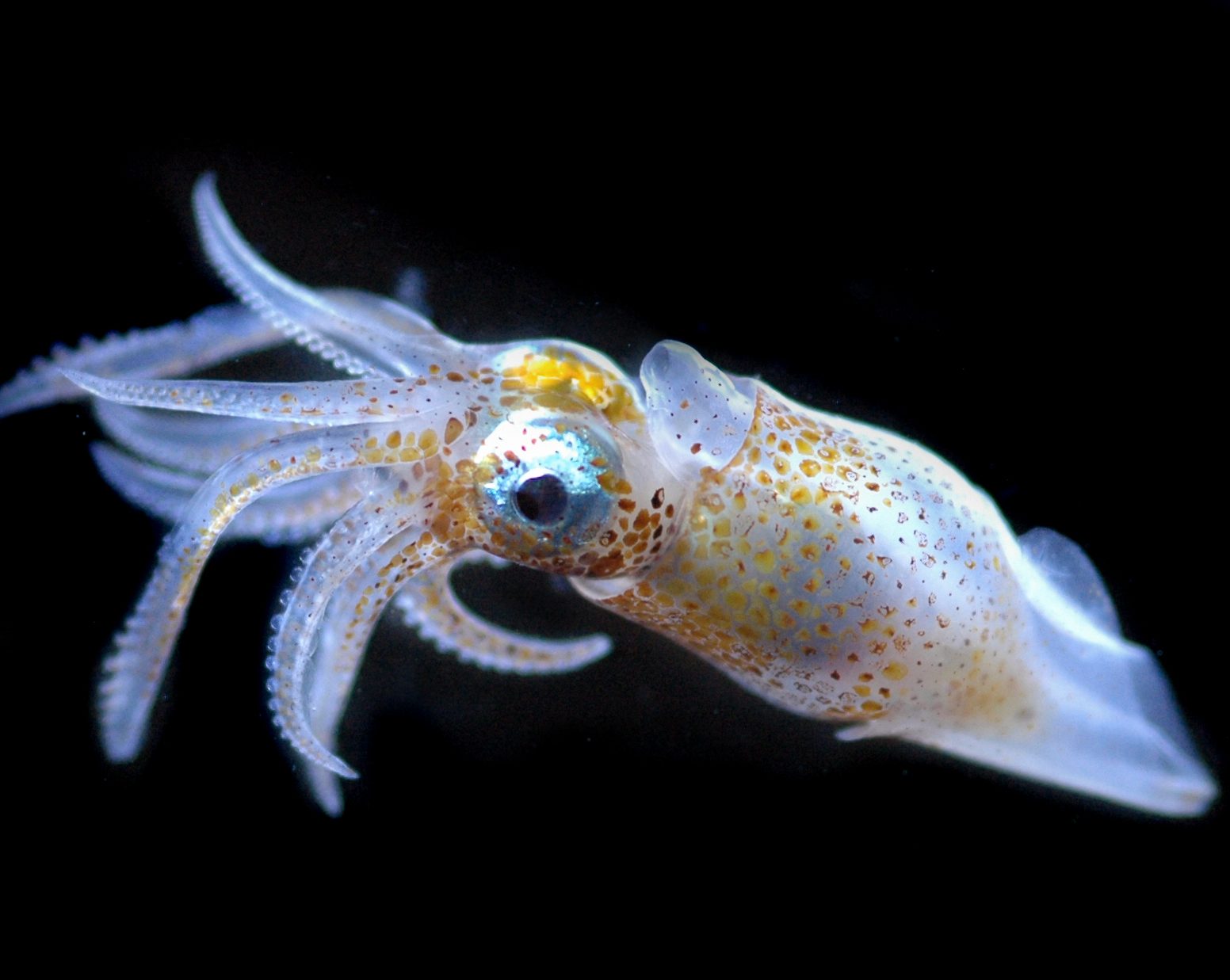
THEY FLOAT IN THE OCEAN BY THE BILLIONS, these wandering animals whose Greek name means “drifter.” Most are smaller than a pinpoint, their adaptive peculiarities (whip-like propellers, bug-like antennae, hair-like fringes for foraging on algae) visible only under a microscope. Others can be seen with the naked eye, ranging in size from a pencil tip (a fish egg) to a No. 2 eraser (a segmented worm) all the way up to the gargantuan “lion’s mane jellyfish” whose bell-shaped body can grow as wide as a surfboard is long.
Their outlandish shapes range from eerie to ethereal. Their colors shine like blown glass. They comprise thousands of species in hundreds of classifications. There are the “pteropods” — marine snails nicknamed “sea butterflies” or “sea angels” for the gossamer “wings” or flaps with which they swim. There are the juvenile squids, whose big-eyed, bell-shaped bodies are crowned by bursts of delicate tentacles. There are the eel larvae, their elongated bodies twisting and curling like shimmery party ribbons.
These are the zooplankton, free-floating creatures that feed on their plantlike brethren, the phytoplankton (sometimes called the “grass of the sea”). Small fish such as herring and mackerel eat the zooplankton , and so it goes, up the size scale of ocean organisms. Without the legions of plankton holding it up, the vast oceanic food web would collapse.
Net Fragility
Scientists seeking to gauge overall ocean health want to know more about zooplankton, these ubiquitous drifters that can indicate ecosystem trends and, potentially, signal systemic problems. But zooplankton are hard to study for several reasons. For one thing, they’re tiny and transparent (under magnification, you can see their hearts beating inside their bodies). Many are also as fragile as Jell-O. When scooped into a net, their gelatinous bodies often get squished. Even species that sport shells — such as the shrimplike krill that sustain baleen whales such as humpbacks and blues — can crush and crumble when captured and handled.

That’s why marine scientists at Oregon State University (along with colleagues at the University of Miami and the San Diego-based underwater-instrument manufacturer BellaMare) have designed a state-of-the-art system for studying zooplankton in their natural habitat, photographing them in place while they float. In this way, they can be measured, classified and counted digitally instead of manually. Of special interest to the OSU team led by Robert Cowen, director of the Hatfield Marine Science Center, are the medium-sized zooplankton or “meso-zooplantkton,” which include “ichthyoplankton” (larval fish), whose oceanic lives remain largely a mystery because of their rarity and fragility.
“Our imaging system, towed behind a research vessel, can sample large volumes of water at very high resolution without disturbing the organisms,” says Cowen. “This allows us to quantify their density, size and distribution and observe them in their natural position and orientation within the water column.” Specially designed “shadow-illumination” lighting lets Cowen and his team capture crystal-clear, highly contoured images of the creatures for later characterization.

Oceanic Oscillation
Jessica Luo and Kelly Robinson are jelly lovers — not the jellies you smear on your toast but the ones that float in the ocean.
Read more…
Toward Automated Analysis
But the vast volume of digital data collected tends to quickly overwhelm the processing capacity of researchers. It takes about three years to manually analyze the 1 million images Cowen can collect in just 24 hours at sea — findings that are by then outdated in an ocean environment that changes day to day. To speed up the analysis, Cowen and his Plankton Lab team at Oregon State have reached out to a wider community through a couple of avenues: a website named Plankton Portal hosted on the citizen-science platform Zooniverse, and the first-ever worldwide data derby, the National Data Science Bowl, sponsored by Virginia-based management consulting firm Booz Allen Hamilton along with Kaggle, the world’s leading online data science competition community.
On the Plankton Portal, citizen scientists get a quick tutorial and, within minutes, start classifying zooplankton. Nearly 7,000 individuals from all over the globe have joined the “crowd-sourcing” effort. Since September 2013, Plankton Portal users have made more than 700,000 classifications on 150,000 images (multiple people are asked to classify every image, and group consensus rules.)
The National Data Science Bowl was established as a three-month-long competition offering $175,000 in total prize money to challenge data scientists from around the world to create a mathematical formula for super-accurate, automatic counting and classifying of the digital plankton data. Completed in March, the competition drew nearly 1,300 participants with more than 15,000 entries. A group of graduate students and post-doctoral researchers calling themselves Team “Deep Sea” from Ghent University in Belgium were the overall winners, achieving an 80-percent accuracy rate with their solution.

By engaging the wider world of scientists and citizens in the quest for automated image analysis, Cowen is poised to push the study of these critical zooplankton species to a new level with his novel digital-imaging system.
“Previously very difficult-to-study zooplankton behaviors — feeding, floating, daily rhythms, vertical migration — may be more accessible to a large group of zooplankton scientists through this technology,” he says. “Also, the system will allow much finer resolution of plankton patchiness and distribution driven by environmental factors, including those from human sources. Ultimately, the plankton team hopes that the system will be used broadly by the science community as another tool for advancing our knowledge of plankton and their role in the earth system.”
Click on “Terra Up-Close” above to read about Ph.D. student Jessica Luo and post-doctoral researcher Kelly Robinson, whose passion for plankton is palpable.




